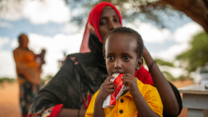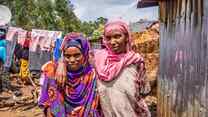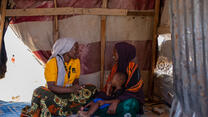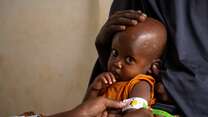Report
The risk of increasing rates of acute malnutrition during the COVID-19 pandemic demonstrates the urgent need to adapt, and expand access to, acute malnutrition diagnosis and treatment services in humanitarian and fragile contexts.
KEY FINDINGS AND RECOMMENDATIONS
- Increased rates of acute malnutrition are an inevitable consequence of COVID-19 and the measures taken to slow its spread – especially in fragile and conflict affected settings where rates of acute malnutrition are already substantially higher than in stable settings.
- In the face of government-mandated shutdowns, millions of people have lost their income, agriculture harvests and sales have been disrupted, food prices have increased, and aid programs focused on nutrition have been disrupted.
- Acute malnutrition among children is highly treatable, but the current health facility based model for treating it may not be safe or practical within the COVID-19 context. IRC is therefore recommending malnutrition treatment programs are adapted including simplifying diagnosis and treatment processes; bringing services to the community; introducing low- or no-touch approaches; and ensuring in-patient care is safe.
- Urgent action is needed to avoid preventable deaths. UN agencies should endorse the adoption of simplified approaches for the early detection and treatment of acute malnutrition as part of COVID-19 response plans and programs; donors should scale-up flexible funding for nutrition; and governments should adapt national malnutrition treatment programs and lift restrictions on the movements of humanitarian personnel, supplies and food.
URGENT ACTION IS NEEDED
UN AGENCIES SHOULD:
- Endorse the adoption of simplified approaches for the early detection and treatment of acute malnutrition as part of COVID-19 response plans and programs, and work with governments and frontline responders to scale-up the approaches.
- Work swiftly with governments to pre-position essential commodities for the prevention and treatment of child malnutrition (e.g. ready to use therapeutic foods) at national, community and health facility levels.
- Classify malnourished children as a ‘vulnerable group’ for COVID-19 to accelerate investments in malnutrition treatment programs across COVID-19 response plans.
- Accelerate progress toward operationalizing the Global Action Plan on Wasting to ensure continuity of care during and after the pandemic.
- Advance the acute malnutrition treatment research agenda by investing in operational research and utilizing evidence generated from COVID-19 adaptations when updating treatment protocols and guidelines.
DONORS SHOULD:
- Scale up flexible funding for nutrition including increasing financing for acute malnutrition treatment programs in humanitarian response funds.
- Commit 35% of overall of nutrition funding to address acute malnutrition as part of bold commitments made for the Nutrition for Growth Summit.
NATIONAL GOVERNMENTS SHOULD:
- Swiftly adapt acute malnutrition treatment programs to include the use of no-touch, low-touch, simplified diagnostic and treatment protocols delivered at the community level by community health workers.
- Integrate acute malnutrition treatment into no/ low-touch iCCM protocols with pre-positioning of ready to use foods outside of health facilities.
- Lift restrictions on the movement of humanitarian personnel, supplies, essential medicines, and food.



